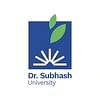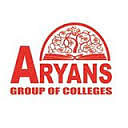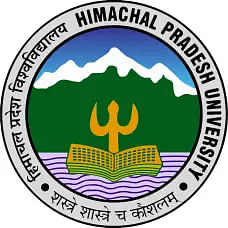
Table of Contents
AP EAPCET Syllabus 2023 is released by the conducting body, Jawaharlal Nehru Technological University, Kakinada (JNTU). The syllabus includes a variety of topics from the areas of math, physics, chemistry, and biology. Candidates who want to be admitted into several engineering and agricultural programmes must take this exam.
Candidates who pass this exam will be given seats at a variety of public and private colleges in the state of Andhra Pradesh.
Read further to know more about the syllabus of AP EAPCET 2023 in the article below.
| AP EAPCET Eligibility Criteria 2023 | AP EAPCET Exam Pattern 2023 |
AP EAPCET Syllabus 2023: Physics
Both the papers, engineering and agricultural streams, share the subject of physics. There will be a total of 40 questions across both papers. Each question will be worth one mark. No provision for negative marking is present. The main topics are given below.
| Motion in a plane | Work, Energy, and Power |
| Units and Measurements | Motion in a Straight Line |
| Thermodynamics | Gravitation |
| Waves | Kinetic Theory |
| Magnetism and Matter | Current Electricity |
| Wave Optics | Electromagnetic Waves and Induction |
| Atoms | Communication Systems |
AP EAPCET Physics Syllabus 2023: Topic Wise
The topic wise syllabus of AP EAPCET Physics Syllabus is given below in detail.
Motion in a plane: Scalars and vectors, Position and displacement vectors, Equality of vectors, Multiplication of vectors by real numbers, Addition and subtraction of vectors - graphical method, Resolution of vectors, Vector addition - analytical method, Motion in a plane, Position vector and displacement, Velocity, Acceleration, Motion in a plane with constant acceleration, Relative velocity in two dimensions, Projectile motion, Equation of path of a projectile, Time of maximum height, Maximum height of a projectile, Horizontal range of the projectile, Uniform circular motion.
Work, Energy, and Power: The Scalar produce, Notions of work and kinetic energy, The work-energy theorem, Work, Kinetic energy, Work done by a variable force, The work-energy theorem for a variable force, The concept of Potential Energy, The conservation of Mechanical Energy, The Potential Energy of a spring, Various forms of energy, Heat, Chemical Energy, Electrical Energy, The Equivalence of Mass and Energy, Nuclear Energy, The Principle of Conservation of Energy, Power, Collisions, Elastic and Inelastic Collisions, Collisions in one dimension, Coefficient of Restitution and its determination, Collisions in Two Dimensions.
Units and Measurements: The international system of units, Measurement of Length, Measurement of Large Distances, Estimation of Very Small Distances, Size of a Molecule, Range of Lengths, Measurement of Mass, Range of Masses, Measurement of time, Accuracy, precision of instruments and errors in measurement, Systematic errors, random errors, least count error, Absolute Error, Relative Error and Percentage Error, Combination of Errors, Significant figures, Rules for Arithmetic Operations with Significant Figures, Rounding off the Uncertain Digits, Rules for Determining the Uncertainty in the Results of Arithmetic Calculations, Dimensions of Physical Quantities, Dimensional Formulae and dimensional equations, Dimensional Analysis and its Applications, Checking the Dimensional Consistency of Equations, Deducing Relation among the Physical Quantities.
Motion in a Straight Line: Position, Path length and displacement, Average velocity and average speed, Instantaneous velocity and speed, Acceleration, Kinematic equations for uniformly accelerated motion, Relative velocity.
Thermodynamics: Thermal equilibrium, Zeroth law of thermodynamics, Heat, Internal Energy and work, First law of thermodynamics, Specific heat capacity, Specific heat capacity of water, Thermodynamic state variables and equation of State, Thermodynamic processes, Quasi-static process, Isothermal Process, Adiabatic Process, Isochoric Process, Isobaric process, Cyclic process, Heat engines, Refrigerators and heat pumps, Second law of thermodynamics, Reversible and irreversible processes, Carnot engine, Carnot’s theorem.
Gravitation: Kepler’s laws, Universal law of gravitation, central forces, The gravitational constant, Acceleration due to gravity of the earth, Acceleration due to gravity below and above the surface of earth, Gravitational potential energy, Escape speed, Orbital Speed, Earth satellites, Energy of an orbiting satellite, Geostationary and polar satellites, Weightlessness.
Waves: Transverse and longitudinal waves, displacement relation in a progressive wave, amplitude and phase, wavelength and angular wave number, period, angular frequency and frequency, the speed of a traveling wave, speed of a transverse wave on stretched string, speed of a longitudinal wave (speed of sound), the principle of superposition of waves, reflection of waves, standing waves and normal modes, beats, Doppler effect: source moving and observer stationary, observer moving and source stationary, both source and observer moving.
Kinetic Theory: Molecular nature of matter, Behavior of gasses, Boyle’s Law, Charles’ Law, Kinetic theory of an ideal gas, Pressure of an Ideal Gas, Kinetic interpretation of temperature, Law of equipartition of energy, Specific heat capacity, Monatomic Gasses, Diatomic Gasses, Polyatomic Gasses, Specific Heat Capacity of Solids, Specific Heat Capacity of Water, Mean free path.
Magnetism and Matter: The bar magnet, The magnetic field lines, Bar magnet as an equivalent solenoid, The dipole in a uniform magnetic field, The electrostatic analog, Magnetism and Gauss’s Law, The Earth’s magnetism, Magnetic declination and dip, Magnetisation and magnetic intensity, Susceptibility, Magnetic properties of materials; Diamagnetism, Paramagnetism, Ferromagnetism, Hysteresis loop, Permanent magnets and electromagnets.
Current Electricity: Electric current, Electric current in conductors, Ohm’s law, Drift of electrons and the origin of resistivity, Mobility, Limitations of Ohm’s law, Resistivity of various materials, Color code of resistors, Temperature dependence of resistivity, Electrical energy, Power, Combination of resistors – series and parallel. Cells, EMF, Internal resistance, Cells in series and in parallel, Kirchhoff’s rules, Wheatstone Bridge, Meter Bridge, Potentiometer.
Wave Optics: Huygens principle, Refraction and reflection of plane waves using Huygens principle, Refraction in a rarer medium (at the denser medium boundary), Reflection of a plane wave by a plane surface, The Doppler effect, Coherent and Incoherent addition of waves, Interference of light waves and Young‘s experiment, Diffraction, The single slit diffraction, Resolving power of optical instruments, The validity of ray optics, Polarization, Polarization by scattering, Polarization by reflection.
Atoms: Alpha particle scattering and Rutherford’s nuclear model of an atom, Alpha particle trajectory, Electron orbits, Atomic spectra, Spectral series, Bohr model of the hydrogen atom, Energy levels, Franck – Hertz experiment, The line spectra of the hydrogen atom, De Broglie’s explanation of Bohr’s second postulate of quantization, LASER light.
Electromagnetic Waves: Displacement current, Maxwell’s equations, Electromagnetic waves, Sources of electromagnetic waves, Nature of electromagnetic waves, Electromagnetic spectrum, Radio waves, Microwaves, Infrared waves, Visible rays, Ultraviolet rays, X-rays, Gamma rays.
Electromagnetic Induction: The experiments of Faraday and Henry, Magnetic flux, Faraday’s Law of Induction, Lenz’s law and conservation of energy, Motional electromotive force, Energy consideration - a quantitative study, Eddy currents, inductance, Mutual inductance, Self-inductance, AC generator.
Communication Systems: Elements of a Communication system, Basic terminology used in electronic communication systems, Bandwidth of signals, Bandwidth of transmission medium, Propagation of electromagnetic waves, Ground waves, Sky waves, Space wave, Modulation and its necessity, Size of the antenna or aerial, Effective power radiated by an antenna, Mixing up of signals from different transmitters, Amplitude modulation, Production of amplitude modulated wave, Detection of amplitude modulated wave.
AP EAPCET Syllabus 2023: Chemistry
There will be questions on the subject of Chemistry in both the Engineering and Agriculture exams. There are 40 questions in the Chemistry section, with the majority coming from Physical and Organic Chemistry. The main topics are given below.
| Chemical Equilibrium and Acids-Bases | Polymers |
| Hydrogen and Its Compounds | Organic Compounds Containing Nitrogen |
| States of Matter- Gases and Liquids | Atomic Structure |
| p-Block elements | Classification of Elements and Periodicity in Properties |
AP EAPCET Chemistry Syllabus 2023: Topic Wise
The topic wise syllabus of AP EAPCET Chemistry Syllabus is given below in detail.
Chemical Equilibrium and Acids-Bases: Equilibrium in Physical process; Equilibrium in chemical process - Dynamic Equilibrium; Law of chemical Equilibrium - Law of mass action and Equilibrium constant; Homogeneous Equilibria, Equilibrium constant in gaseous systems. Relationship between KP and Kc; Heterogeneous Equilibria; Applications of Equilibrium constant; Relationship between Equilibrium constant K, reaction quotient Q and Gibbs energy G; Factors affecting Equilibria.-Le-chattier principle applies to the industrial synthesis of Ammonia and Sulphur trioxide; Ionic Equilibrium in solutions; Acids, bases, and salts- Arrhenius, Bronsted-Lowry and Lewis concepts of acids and bases, etc.
Polymers: Classification of Polymers -Classification based on source, structure, mode of polymerization, molecular forces, and growth polymerization; Types of polymerization reactions-addition polymerization or chain growth polymerization-ionic polymerization, free radical mechanism-preparation of addition polymers-polythene, Teflon and polyacrylonitrile-condensation polymerization or step-growth polymerization-polyamides-preparation of Nylon 6,6 and nylon 6-poly esters-terylene-bakelite, melamine-formaldehyde polymers, etc.
Hydrogen and Its Compounds: Position of hydrogen in the periodic table; Dihydrogen-Occurence and Isotopes; Preparation of Dihydrogen; Properties of Dihydrogen; Hydrides: Ionic, covalent, and non-stoichiometric hydrides; Water: Physical properties; structure of water, ice. Chemical properties of water; hard and soft water, Temporary and permanent hardness of water; Hydrogen peroxide: Preparation; Physical properties; structure and chemical properties; storage and uses; Heavy Water; Hydrogen as a fuel.
Organic Compounds Containing Nitrogen: AMINES Structure of amines; Classification; Nomenclature; Preparation of amines: reduction of nitro compounds, ammonolysis of alkyl halides, reduction of nitriles, reduction of amides, Gabriel phthalimide synthesis and Hoffmann bromamide degradation reaction; Physical properties; Chemical reactions: the basic character of amines, alkylation, acylation, carbylamine reaction, reaction with nitrous acid, reaction with an aryl sulfonyl chloride, the electrophilic substitution of aromatic amines (aniline)-bromination, nitration, and sulphonation.
States of Matter- Gases and Liquids: Intermolecular forces; Thermal Energy; Intermolecular forces Vs Thermal interactions; The Gaseous State; The Gas Laws; Ideal gas equation; Graham’s law of diffusion - Dalton’s Law of partial pressures; Kinetic molecular theory of gasses; Kinetic gas equation of an ideal gas (No derivation) deduction of gas laws from Kinetic gas equation; Distribution of molecular speeds - RMS, average and most probable speeds-Kinetic energy of gas molecules; Behavior of real gasses - Deviation from Ideal gas behavior - Compressibility factor Vs Pressure diagrams of real gasses; Liquefaction of gasses; Liquid State - Properties of Liquids in terms of Intermolecular interactions - Vapour pressure, Viscosity and Surface tension (Qualitative idea only. No mathematical derivation).
Atomic Structure: Rutherford’s Nuclear Model of atom; Developments to the Bohr’s model of atom; Nature of electromagnetic radiation; Particle nature of electromagnetic radiation- Planck’s quantum theory; Bohr’s model for Hydrogen atom; Explanation of line spectrum of hydrogen; Limitations of Bohr’s model; Quantum mechanical considerations of subatomic particles; Dual behavior of matter; Heisenberg’s uncertainty principle; Quantum mechanical model of an atom. Important features of Quantum mechanical model of atom; Orbitals and quantum numbers; Shapes of atomic orbitals; Energies of orbitals; Filling of orbitals in atoms. Aufbau Principle, Pauli’s exclusion principle, and Hund’s rule of maximum multiplicity; Electronic configurations of atoms; Stability of half-filled and completely filled orbit.
p-Block elements
- Group-15 Elements: Occurrence- electronic configuration, atomic and ionic radii, ionization enthalpy, electronegativity, physical and chemical properties; Dinitrogen-preparation, properties and uses; Compounds of nitrogen-preparation, properties and uses of ammonia; Oxides of nitrogen; Preparation and properties of nitric acid; Phosphorous-allotropic forms; Phosphine-preparation, properties and uses; Phosphorous halides; Oxoacids of phosphorous.
- Group-16 Elements: Occurrence- electronic configuration, atomic and ionic radii, ionization enthalpy, electron gain enthalpy, electronegativity, physical and chemical properties; Dioxygen-preparation, properties and uses; Simple oxides; Ozone-preparation, properties, structure and uses; Sulphur-allotropic forms; Sulphur dioxide preparation, properties and uses; Oxoacids of sulfur; Sulphuric acid- manufacture, properties and uses.
- Group-17 Elements: Occurrence, electronic configuration, atomic and ionic radii, ionization enthalpy, electron gain enthalpy, electronegativity, physical and chemical properties; Chlorine- preparation, properties and uses; Hydrogen chloride- preparation, properties and uses; Oxoacids of halogens; Interhalogen compounds- preparation, properties and uses.
- Group-18 Elements: Occurrence, electronic configuration, ionization enthalpy, atomic radii, electron gain enthalpy, physical and chemical properties(a) Xenon-fluorine compounds- XeF2,XeF4 and XeF6 -preparation, hydrolysis and formation of fluoro anions-structures of XeF2, XeF4 and XeF6 (b) Xenon-oxygen compounds XeO3 and XeOF4 - their formation and structures-uses of noble gases
Classification of Elements and Periodicity in Properties: Need to classify elements; Genesis of periodic classification; Modern periodic law and present form of the periodic table; Nomenclature of elements with atomic number greater than 100; Electronic configuration of elements and the periodic table; Electronic configuration and types of elements s,p,d.and f blocks; Trends in physical properties: (a) Atomic radius, (b) Ionic radius (c) Variation of size in inner transition elements, (d) Ionization enthalpy,(e) Electron gain enthalpy, (f) Electronegativity; Periodic trends in chemical properties: (a) Valence or Oxidation states, (b) Anomalous properties of second-period elements - diagonal relationship; Periodic trends and chemical reactivity.
AP EAPCET Syllabus 2023: Mathematics
The Mathematics section of the exam will be required of all engineering aspirants taking the AP EAPCET (AP EAMCET) in 2023. The part has 80 questions total, with the majority of them pertaining to probability. Algebra, trigonometry, vector algebra, measures of dispersion & probability, coordinate geometry, and calculus are among the subjects covered in this section. The main topics are listed below.
| Coordinate Geometry | Algebra & Vector Algebra |
| Trigonometry | Calculus |
AP EAPCET Mathematics Syllabus 2023: Topic Wise
The topic wise syllabus of AP EAPCET Mathematics Syllabus is given below in detail.
Coordinate Geometry
- Locus: Definition of locus, Illustrations, To find equations of locus, Problems connected to it.
- The Straight Line: Revision of fundamental results, Straight line, Normal form, Illustrations, Symmetric form, Straight line - Reduction into various forms, Intersection of two Straight Lines, Family of straight lines, Concurrent lines, Condition for Concurrent lines, Angle between two lines, Length of a perpendicular from a point to a Line, Distance between two parallel lines, Concurrent lines, properties related to a triangle.
- Transformation of Axes: Transformation of axes, Rules, Derivations, and Illustrations, Rotation of axes, Derivations, Illustrations.
- Circle: Equation of circle, Standard form, Center and radius equation of a circle with a given line segment as diameter & equation of a circle through three noncollinear points, parametric equations of a circle, Position of a point in the plane of a circle, Power of a point-definition of a tangent, Length of a tangent, Position of a straight line in the plane of a circle, Conditions for a line to be tangent, Chord joining two points on a circle, Equation of the tangent at a point on the circle, Point of contact, Equation of normal, Chord of contact, Pole and polar, Conjugate points and conjugate lines, Equation of chord in term of its midpoint, Relative position of two circles, Circles touching each other externally, internally, Common tangents, Centers of similitude, Equation of pair of tangents from an external point.
- Parabola: Conic sections, Parabola, Equation of parabola in standard form, Different forms of parabola parametric equations, Equations of tangent and normal at a point on the parabola ( Cartesian and parametric), Conditions for a straight line to be a tangent.
- Hyperbola: Equation of hyperbola in standard form, Parametric equations, Equations of tangent and normal at a point on the hyperbola (Cartesian and parametric), Conditions for a straight line to be a tangent, Asymptotes.
Vector Algebra
- Addition of Vectors : Vectors as a triad of real numbers, Classification of vectors, Addition of vectors, Scalar multiplication, Angle between two non zero vectors, Linear combination of vectors, Component of a vector in three dimensions, Vector equations of line and plane including their Cartesian equivalent forms.
- Product of Vectors : Scalar Product, Geometrical Interpretations, Orthogonal projections, Properties of dot product, Expression of dot product in i, j, k system, Angle between two vectors, Geometrical Vector methods, Vector equations of plane in normal form, Angle between two planes, Vector product of two vectors and properties, Vector product in i, j, k system, Vector Areas, Scalar Triple Product, Vector equations of plane in different forms, Skew lines, Shortest distance and their Cartesian equivalents. Plane through the line of intersection of two planes, condition for coplanarity of two lines, perpendicular distance of a point from a plane, angle between line and a plane. Cartesian equivalents of all these results, Vector Triple Product, Results.
Trigonometry
- Trigonometric Equations: General Solution of Trigonometric Equations, Simple Trigonometric Equations, Solutions.
- Properties of Triangles: Relation between sides and angles of a Triangle, Sine, Cosine, Tangent and Projection rules, Half angle formulae and areas of a triangle, Incircle and Excircle of aTriangle.
- Inverse Trigonometric Functions: To reduce a Trigonometric Function into a bijection, Graphs of Inverse Trigonometric Functions, Properties of Inverse Trigonometric Functions.
- Hyperbolic Functions: Definition of Hyperbolic Function, Graphs, Definition of Inverse Hyperbolic Functions, Graphs, Addition formulae of Hyperbolic Functions.
- Trigonometric Ratios up to Transformations: Graphs and Periodicity of Trigonometric functions, Trigonometric ratios and Compound angles, Trigonometric ratios of multiple and sub, Multiple angles, Transformations, Sum and Product rules.
Calculus
- Limits and Continuity: Intervals and neighborhoods, Limits, Standard Limits, Continuity.
- Differentiation: Derivative of a function, Elementary Properties, Trigonometric, Inverse Trigonometric, Hyperbolic, Inverse Hyperbolic Function, Derivatives, Methods of Differentiation, Second-order Derivatives.
- Applications of Derivatives: Errors and approximations, Geometrical Interpretation of a derivative, Equations of tangents and normals, Lengths of a tangent, Angles between two curves and condition for orthogonality of curves, Derivative as the rate of change, Rolle’s Theorem and Lagrange’s Mean value theorem without proofs and their geometrical interpretation, Increasing and decreasing functions, Maxima and Minima.
- Integration: Integration as the inverse process of differentiation, Standard forms, Properties of integrals, Method of substitution, Integration of Algebraic exponential, Logarithmic, Trigonometric and inverse trigonometric functions, Integration by parts, Integration by Partial fractions method, Reduction formulae.
- Differential equations: Formation of differential equation, Degree and order of an ordinary differential equation, Solving differential equation by i) Variables separable method, ii) Homogeneous differential equation, iii) Non - Homogeneous differential equation, iv) Linear differential equations.
Algebra
- Functions: Types of functions, Definitions, Inverse functions and Theorems, Domain, Range, Inverse of real-valued functions.
- Mathematical Induction: Principle of Mathematical Induction & Theorems, Applications of Mathematical Induction, Problems on divisibility.
- Complex Number: Complex number as an ordered pair of real numbers, fundamental operations, Representation of complex numbers in the form a+ib, Modulus and amplitude of complex numbers, Illustrations, Geometrical and Polar Representation of complex numbers in Argand plane, Argand diagram.
- Matrices: Types of matrices, Scalar multiple of a matrix and multiplication of matrices, Transpose of a matrix, Determinants, Adjoint and Inverse of a matrix, Consistency, and inconsistency of Equations, Rank of a matrix, Solution of simultaneous linear equations.
- De Moivre’s Theorem: De Moivre’s theorem, Integral and Rational indices, nth roots of unity, Geometrical Interpretations, Illustrations.
- Theory of Equations: The relation between the roots and coefficients in an equation, Solving the equations when two or more roots of it are connected by certain relation, Equation with real coefficients, the occurrence of complex roots in conjugate pairs, and its consequences, Transformation of equations, Reciprocal Equations.
- Partial fractions: Partial fractions of f(x)/g(x) when g(x) contains non, repeated linear factors, Partial fractions of f(x)/g(x) where both f(x) and g(x) are polynomials and when g(x) contains repeated and/or non-repeated linear factors, Partial fractions of f(x)/g(x) when g(x) contains irreducible factors.
- Permutations and Combinations: Fundamental Principle of counting – linear and circular permutationsPermutations of ‘n’ dissimilar things taken ‘r’ at a time - Permutations when repetitions allowed - Circular permutations - Permutations with constraint repetitions - Combinations-definitions, certain theorems, and their applications.
- Quadratic Expressions: Quadratic expressions, equations in one variable, Signs of quadratic expressions, Change in signs, Maximum and minimum values, and Quadratic equations.
- Binomial Theorem: Binomial theorem for positive integral index, Binomial theorem for rational Index (without proof), Approximations using Binomial theorem.
AP EAPCET Syllabus 2023: Botany
There will be questions on the agriculture exam from the section of botany. A total of 40 questions will be drawn from this section. There will be no negative marking; each question will be worth one mark. The main topics are described below.
- Diversity in the Living World
- Reproduction in Plants
- Plant Systematics
- Plant Physiology
- Structural Organization in Plants- Morphology
- Cell Structure and Function
- Internal Organization of Plants
- Plant Ecology
- Genetics
- Plants
- Microbiology
- Microbes and Human Welfare
- Biotechnology
- Molecular Biology.
AP EAPCET Syllabus 2023: Zoology
Only the Biology section includes zoology. There will be 40 questions in all on it. The topic on invertebrate phyla is expected to generate the most questions. The main topics are listed below.
- Diversity in the Living World
- Animal Diversity- I
- Animal Diversity-II
- Locomotion & Reproduction in Protozoa
- Structural Organization in Animals
- Biology & Human Welfare
- Structural Organization in Plants- Morphology
- Type Study of Periplaneta Americana
- Ecology & Environment
- Human Anatomy and Physiology-III
- Human Anatomy and Physiology-II
- Human Anatomy and Physiology-IV
- Applied Biology
- Organic Evolution
- Genetics
- Human Reproduction.


















